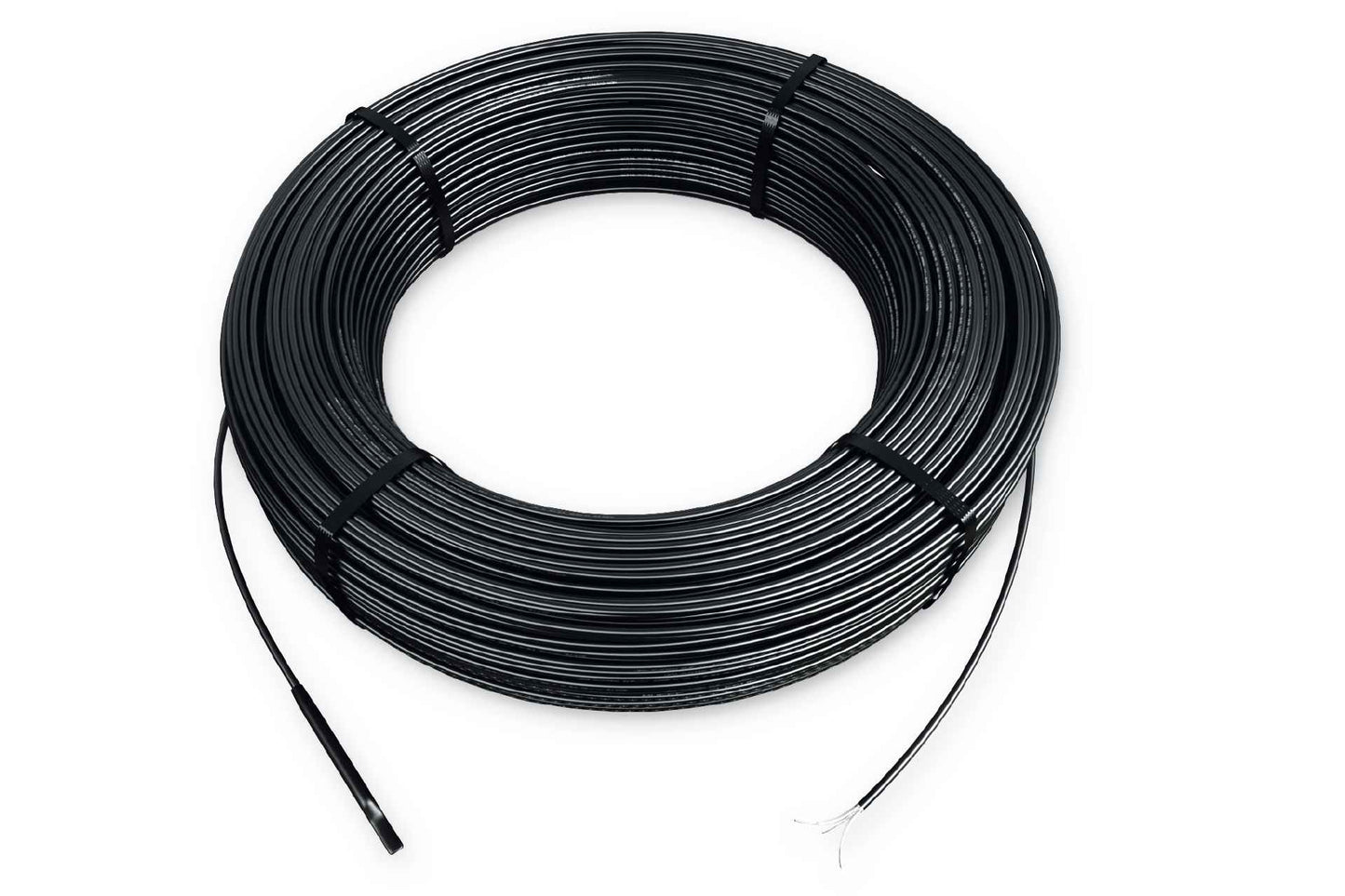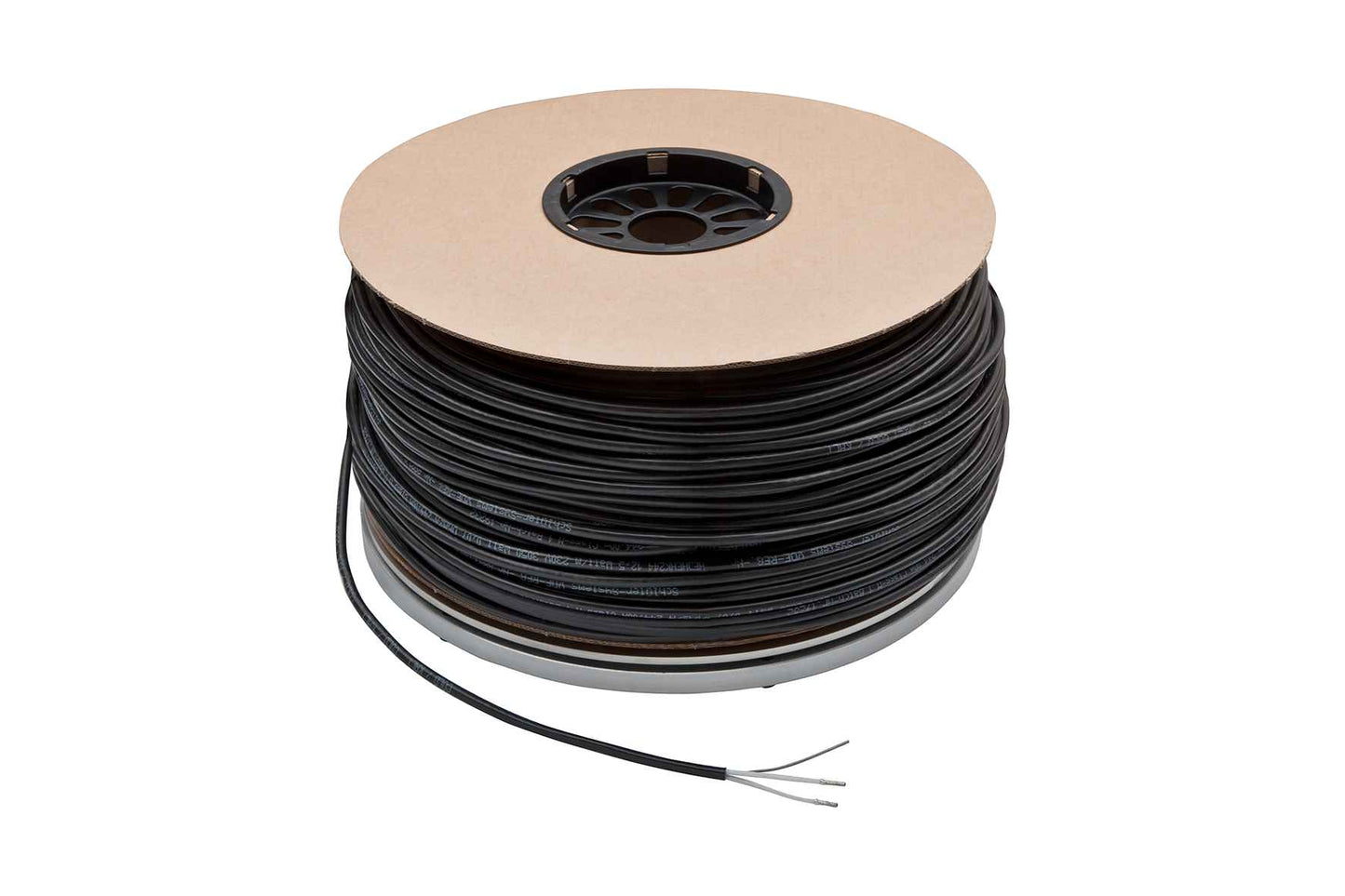Schluter
Schlüter - DITRA-HEAT-E-HK
Schlüter - DITRA-HEAT-E-HK
Couldn't load pickup availability
For Special Budgets click here
Electric heating cable for the DITRA-HEAT-E system
The Schlüter-DITRA-HEAT-E-HK electric heating cable is installed in the Schlüter-DITRA-HEAT decoupling belt and is used for floor and wall mounting applications. It is available in lengths from 4 to 244 meters. As our systems are certified for waterproofing, the heating cables are approved for use in bathrooms and wet areas.
Note: Heating cables must not be shortened.
When selecting the heating cable, please note that the product table indicates the heated space in m² and not the size of the room. To determine heated space, deduct unheated zones, such as perimeter areas and storage space, from the room size.
What this product does
In floor areas, heating cables can be installed immediately after gluing DITRA-HEAT, using a minimum spacing of 9 cm (every third pin ≙ 136 W/m²).
For wall installation, heating cables are installed as soon as a suitable adhesive bond is achieved. The installation spacing is 6 cm (every second pin ≙ 200 W/m²) or 9 cm (every third pin ≙ 136 W/m²). The use of mats is recommended for wall mounting.
Use the Schlüter-DITRA-HEAT-E-CT cable tester to measure the resistance of DITRA-HEAT-E-HK electric heating cables and remote sensors supplied with DITRA-HEAT-E thermostats. The testing device must be used to monitor the resistance of the heating cables throughout the installation phase and alert the installer with an acoustic signal in case of damage. The cable tester automatically turns off 60 minutes after the last key activation (values will not be saved).
How to install this product
How to install this product
How to install this product
Electrical installation must be carried out by a qualified electrician in accordance with BS7671. Heating cables must have a multi-pole circuit breaker with a contact distance of at least 3 mm per pole. To protect against inadvertent contact, an RCD (IF circuit breaker) with trip current of IΔN ≤ 30 mA must be installed.
More information about installing the heating cables and installing and configuring the thermostat can be found in the respective installation instructions.
Heating cable installation
-
-
For floor installation, the heating cables can be installed immediately after gluing the DITRA-HEAT uncoupling mat, using a float or roller.
For wall installation, heating cables are installed as soon as a suitable adhesive bond is achieved.
Heating cables must never overlap or touch each other. -
Create a corresponding recess in the sealed end area of the cable.
Note: Use the Schlüter-DITRA-HEAT-E-CT cable tester to continuously measure the resistance of DITRA-HEAT-E-HK electric heating cables. The device monitors the resistance of the heating cables throughout the installation phase and alerts the installer with an acoustic signal in the event of damage.
-
For floor installation, the heating cables can be installed immediately after gluing the DITRA-HEAT uncoupling mat, using a float or roller.
-
Floor areas:
The pin spacing on the decoupling mat is 3 cm. Installation spacing in the floor area must be
-
at least 9 cm (about every third pin – equivalent to 136 W/m²) One
Closer installation spacing – especially in floor areas – can cause overheating and cause damage to building structures.
Avoid stepping directly on heating cables during installation work.
-
Wall areas:
Depending on available space, desired surface temperature and required thermal power, installation spacing in wall areas can be
- 6 cm (around every second pin – equivalent to 200 W/m²) or
- 9 cm (about every third pin – equivalent to 136 W/m²)
- The transition from the heating cable to the connecting cable (sleeve) is indicated by a label. The 'cold leg' (4 m) must be connected directly to a junction box or thermostat. The 'cold leg' can be shortened as much as possible. length of 1 m before assembly. Heating cables must not be shortened.
Thermostat:
DITRA-HEAT system heating cables can only be operated with DITRA-HEAT-E thermostats.
Share
- Delivery
- Devolution







